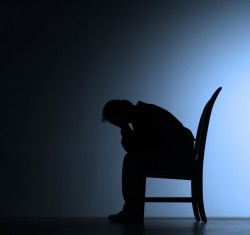10 Times you Should say No to Ketamine
According to the National Institute on Drug Abuse, ketamine is a anesthetic and a paralytic. This makes ketamine extremely dangerous in certain situations. You can do serious physical and mental damage to yourself when you use ketamine in the wrong situations.
1. At Raves
Raves are large parties where techno music and doing drugs, particularly MDMA, is commonplace. Most people at raves do stimulants. Although some users recommend it, doing a drug that could paralyze you or make you unconcious for any length of time is dangerous during a rave. There are usually a lot of people who are not in control of their actions at raves. You can easily get hurt.
2. At Parties
Like raves, parties are dangerous places for using ketamine. Ketamine is a date rape drug. There are a lot of people who report date rape at parties where they’ve either voluntarily or involuntarily taken ketamine.
3. Around People you Do Not Know

You shouldn’t do ketamine when you’re alone, in case of a bad reaction.
Like raves and parties, ketamine is dangerous, when you are around people that you do not know. There are reasons why people use this as a drug to hurt others. It renders you incapable of defending or protecting yourself, no matter how strong or big you are ketamine still makes you vulnerable.
4. When you are Not at Home
When you are not at home passing out or becoming unconscious can be extremely dangerous. If you are not at home with people you trust, you are in danger of being taken advantage of or you could find yourself unconscious outside in the cold, in the street, or somewhere else dangerous. Not everyone is nice enough to call emergency services, if something should go wrong.
5. When you are all Alone
Doing a hallucinogen, dissociative, or paralytic, while you are alone is dangerous. You could have a reaction with no one around to help.
6. When you are Somewhere that being Paralyzed and Unable to Defend yourself is Dangerous
There are many situations that being unconscious is dangerous. Even though you might be happy unable to move and hallucinating wildly, best case scenario someone could call an ambulance and you could wake up in a hospital or they could do something much much worse.
7. When you are Already Showing the Physical Signs of Ketamine Abuse
If you are already showing some of the physical side effects, such as memory loss, you should probably say no to more ketamine. The damage to the body is cumulative and often progresses as you take more of the drug.
8. When you are Showing the Signs of Bladder Failure
Chronic bladder infections, painful urination, and blood in your urine are all symptoms of bladder failure. This failure can become permanent. If you are experiencing these symptoms you definitely need to say no to your next dose of ketamine.
9. If you are Building a Tolerance
Tolerance is a sign of addiction. If you are building a tolerance, you have been using ketamine too long. Although ketamine is not physically addictive, it is highly psychologically addictive and can be very dangerous.
10. When you Need Ketamine Addiction Treatment
If you have thought about getting addiction treatment or know you are addicted it is definitely time to say no to ketamine and seen the treatment you need. We can help you find ketamine addiction treatment by calling 800-915-1270 (Sponsored).
 Date Rape Drug Addiction: Why You Need to Seek Treatment Now -
An addiction to ketamine can quickly lead to physical and psychological health problems.
Date Rape Drug Addiction: Why You Need to Seek Treatment Now -
An addiction to ketamine can quickly lead to physical and psychological health problems.  Secrets: How People Hide their Ketamine Use -
Learn the behaviors of hiding ketamine use and the odd places in which some addicts store the drug
Secrets: How People Hide their Ketamine Use -
Learn the behaviors of hiding ketamine use and the odd places in which some addicts store the drug  10 Ways Ketamine Can Ruin Your Life -
Using ketamine can have some terrible consequences that could last the rest of your life
10 Ways Ketamine Can Ruin Your Life -
Using ketamine can have some terrible consequences that could last the rest of your life  How to Help a Friend Who Has Overdosed on Ketamine -
Vomiting, muscle twitches and slurred speech are common warning signs of a ketamine overdose
How to Help a Friend Who Has Overdosed on Ketamine -
Vomiting, muscle twitches and slurred speech are common warning signs of a ketamine overdose  Effects of Ketamine Abuse -
Ketamine abuse is very dangerous to the psychological well-being of users. Even for recreational users mild delusions have been noted, and frequent users have even more to worry about
Effects of Ketamine Abuse -
Ketamine abuse is very dangerous to the psychological well-being of users. Even for recreational users mild delusions have been noted, and frequent users have even more to worry about